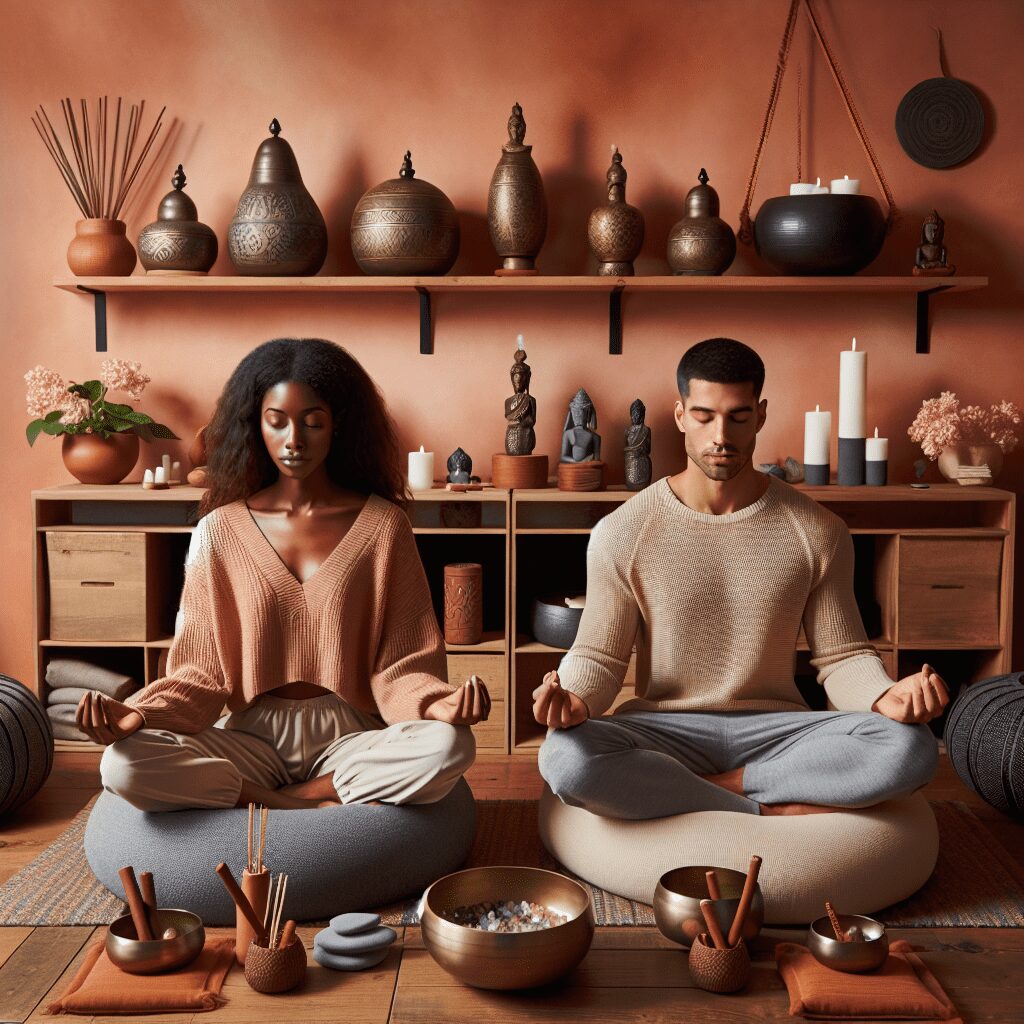
Prioritize your mental well-being daily. Enhance your life by nurturing your mental health with the Smart Meditation app. Break free from stress, alleviate anxiety, and enhance your sleep quality starting today.
Should You Meditate With Eyes Closed Or Open?
Meditation: To See or Not to See?
In the grand tapestry of mindfulness practices, meditation stands tall as a beacon of serenity and self-discovery. However, beginners and seasoned practitioners alike often find themselves at a crossroads, pondering a seemingly simple yet profoundly impacting question: Should you meditate with your eyes closed or open? The answer, like many things in the realm of meditation, isn’t quite black and white but rather a shade of zen-gray. So, let’s dive deeper into the art of meditative vision to uncover what might work best for you.
The Closed-Eye Conundrum
Closing your eyes during meditation is akin to drawing the curtains on the outside world, creating a private sanctuary where the mind can wander free from visual stimuli. This method is embraced particularly by those who seek to delve deep into their inner selves, finding solace in the darkness behind their eyelids. Here’s why many opt for this approach:
- Boosts Internal Focus: With external distractions out of view, it’s easier to turn the spotlight inward, exploring the nooks and crannies of your own consciousness.
- Encourages Relaxation: Closing your eyes can be an automatic signal to your body that it’s time to unwind, helping to dial down the stress and ramp up the calm.
- Enhances Visualization: For practices that involve picturing certain images or scenarios, having your eyes closed can make it easier to paint these pictures on the canvas of your mind.
However, it’s not all sunshine and rainbows. Some folks find that closing their eyes invites drowsiness, leading more to accidental naps than nirvana.
The Open-Eye Odyssey
On the flip side, meditating with eyes open offers a different bouquet of benefits, a practice predominant in many Zen and Tibetan traditions. This technique involves a soft gaze, not focusing intently but rather letting your eyes rest on a spot or diffuse across a wider panorama. Let’s see why this might be your cup of Zen tea:
- Grounds You in the Present: Keeping your eyes open fosters a stronger connection with your immediate surroundings, tethering your mindfulness practice to the real world.
- Reduces Drowsiness: For those who find closed-eye meditation synonymous with sleep, keeping the peepers open can help keep the Sandman at bay.
- Enhances Awareness: By absorbing the colors, shapes, and movements around you, you’re training your mind to notice subtleties, cultivating a deeper sense of awareness.
However, it’s worth noting that for some, the visual buffet of meditation with eyes open can be more distracting than a juggling clown at a library.
So, Which Road to Take?
Ah, the million-dollar question! The answer, as frustrating as it might sound, is that it depends. It’s like asking, “Is chocolate or vanilla better?” Both have their legions of fans and their perfect moments. The best advice? Experiment.
Start by trying both methods under similar conditions—same time, same place, same duration. Notice how each session feels. Do you find yourself more distracted with your eyes open? Or perhaps you’re nodding off the moment you shut your eyes?
Ultimately, meditation is a personal journey. What works wonderfully for one person might be another’s meditation mishap. The key is to approach each practice with curiosity and openness, allowing your experience to guide you.
Embracing Your Path
Whether you choose to meditate with your eyes wide open or comfortably closed, remember, the essence of meditation lies in the awareness and peace it brings into your life. So, don’t get too hung up on the optics of it all. Instead, focus on fostering a practice that feels right for you—one that ushers you into a state of tranquility, clarity, and mindfulness. After all, in the vast expanse of meditation, there are many paths to enlightenment, and the best path is the one you choose to walk (or sit) on, eyes open or closed.





